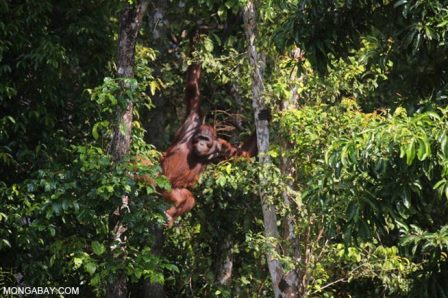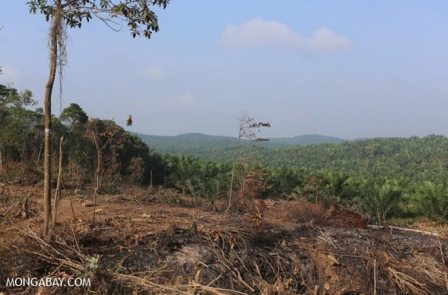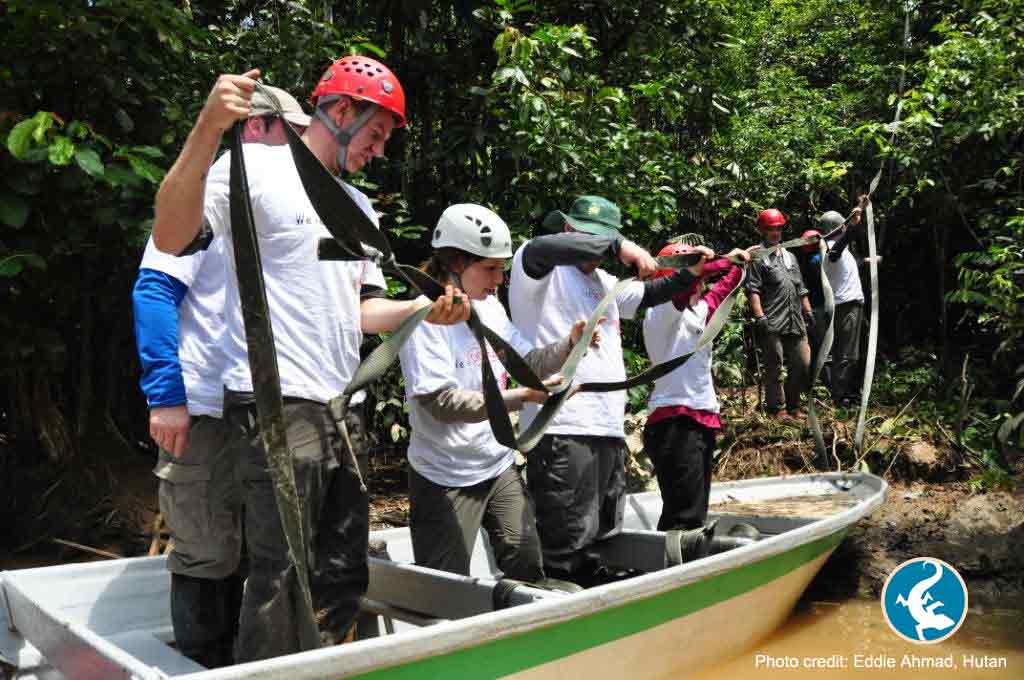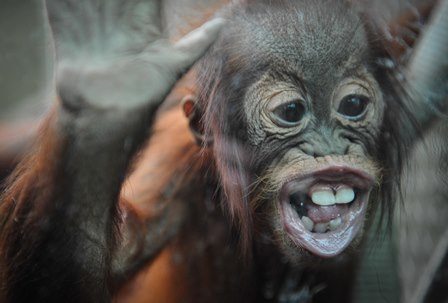
Why do orangutans need our help?
You probably already know that orangutans are threatened with extinction. This is a well-known worrying fact; and if we don’t continue to Act for Wildlife we will lose this animal for good.
The main reason their numbers are in decline is due to loss of habitat. Their homes are being destroyed by forest fires and logging for timber and agriculture; particularly oil palm plantations. This is a HUGE problem as orangutans rely on the forests for food and shelter.

Only 54,000 Bornean and 6,400 Sumatran orangutans are thought to remain in the wild and numbers are in decline. That’s why we need to work hard and quickly to save Asia’s great apes.
What are we doing?
We work with a number of projects fighting to protect the forest ecosystem and the many species that exist within them, working with several partners on the islands of Sumatra and Borneo. Our major focus is on the highly important Lower Kinabatangan Wildlife Sanctuary in Sabah State; home to the largest orangutan population in Malaysian Borneo.
Our staff here in the UK are also working on the issue of unsustainable palmoil – working with people and organisations locally, nationally and globally to find solutions to this conservation problem.

Thanks to our amazing supporters and our partners working out in the field we have made progress in the wild to help orangutans. Last year we reported how new research in Borneo has been conducted using 15 specialist cameras that were vital in studying and protecting orangutans in the wild – we couldn’t have done that without you! This research will help us to understand more about their behaviour in oil palm plantations. This year we will provide you with another update on how you’ve made a difference in the past 12 months.
Chester Zoo also opened the Realm of the Red Ape exhibit in 2007 – this world class orangutan enclosure is also home to one of the most successful orangutan breeding programmes – this breeding centre has also enabled us to enhance our contribution to in-situ conservation. For example, read how the orangutans at the zoo and their dental health can help conservation studies on the other side of the world.

Want to know more?
Throughout August, September and October we will be sharing more information and updates from some of the orangutan conservation projects we’re working with in-situ and ex-situ, we will introduce you to some of the people that work with this species and how you can Act for Wildlife too.
We have plenty for you to get involved in – from helping us with our Palm Oil Challenge (which we will be launching soon) to taking part in Go Orange for Orangutans. Watch this space or sign up to our Act for Wildlife e-newsletter to find out more information.
Can’t wait till then? Brush up on your orangutan knowledge and have a look at the below blogs to get you started:
Know your orangutans? – think you know your orangutans? Here are some facts about these amazing apes.
Spot the difference – as the orangutan is one of our closest relatives we thought we’d explore some of the similarities and differences between us.
Orangutan habitat – orangutans are umbrella species, large animals that require large areas of native forest to survive. By acting to protect orangutans you will also protect many other species that share the same forest.